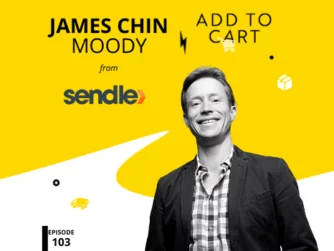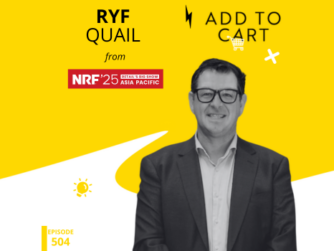In this episode of Add To Cart, we are joined by Andy Evans, Co-founder of humii, who combine cutting edge technology with real human analysis to evaluate a retailer’s customer experience and provide valuable insights. With around 200 retailers onboard including Rebel Sport, Lovisa and The Iconic, humii take the mystery out of nailing an amazing customer experience using over 150 metrics. In this chat, Andy shares the challenges of wrangling their team of mystery shoppers, how they advise their clients on where to action change first and why NPS is dead, long live the humii score!
“There’s about 150 metrics that we capture from start to finish.“
Andy Evans
Straight and clear
“What we really wanted to do with this business was simplify things right down and essentially take the simple model of an in-store mystery shop and apply it to e-commerce businesses. So hence that’s where humii’s come from. We are quite literally doing exactly that. We have the teams of people out there who are purchasing things online, getting them shipped out to their house, and then we’re reviewing and scoring that entire process end to end.
The net result of that is we’re able to provide retail businesses with reports that can give them very clear and direct, actionable data on what it is they’re doing well, what they’re not doing so well, what customers are actually saying about the experience. And from a completely unbiased perspective as well. There’s no value-add for us in whether you’re doing well in certain areas or not so well. We just give it to you very straight and clear.”
The problem with NPS
“Obviously, NPS everyone knows and has used NPS at some point in their lives to measure customer experience. We are really coming at it as essentially an alternative to the NPS. I think if you talk to anyone in e-commerce about NPS scores, anyone who’s actually picked it up and looked at it or used it in anger, they’ll tell you that, straight to the point, it’s a waste of time, to be honest.
We know that NPS scores are generally responded to by emotional customers, so people are really happy or really, really sad. When the NPS score’s calculated, they actually rip the middle of the score out to begin with anyway, so you don’t get the neutral feedback. But also, NPS respondees are still your customer. You’re still asking people who are shopping your store, so they’re naturally biased. They’re shopping your store anyway.
Wouldn’t you rather get perspectives from people who aren’t shopping your store and understand what they might want that might hook them into your store?”
Easy fixes
“We’ve got some low hanging fruit. I call it low hanging fruit, quick fix type stuff. There’s a ton of good examples of that we’ve found, I’ll give you a couple. We had one of our customers, a US brand launch an Australian website. Launch the website, off you go, push out all the marketing, and then we started shopping them on launch and noticed that about 50% of our shoppers were landing on their US website, getting all the way to checkout with the products, and then going to pay and getting a pop-up saying, we don’t ship to Australia. We were able to give them that information. Obviously, they could go back to HQ and make the changes to fix that. But you can imagine the number of people that would’ve landed there outside of what we’re doing.
A few other ones…we interact with onsite search and we go pretty deep into to how that works because we know about the challenges business space around cataloguing products. If someone misspells something or how do you give them personalized search results, it’s a whole crazy world there. But we had one example, one of our customers selling Levi’s jeans. Levi’s. Levi’s is L-E-V-I’S or is it L-E-V-I-S, depending on how you type it, but what we found that if you just went in there and typed it without apostrophe, it wasn’t showing up in search results.
That had been sitting there on the site for a few months, they reckon over three months, and cost them upwards in the hundreds of thousands of dollars worth of business because Levi’s is one of their big sellers.”
Questions answered in this episode include…
- What is the humii score and how does it work?
- What are the areas of online experience that retailers should be looking at right now as low hanging fruit?
- What retailers do you think are delivering the best online customer experience? Why?
Links from the episode:
- humii
- Rebel Sport
- Oroton
- Lovisa
- Levi’s
- NPS
- Homebodii
- Sephora
- The Iconic
- Shopify Plus and Desky (sponsored)
- Packleo (sponsored)
This episode was brought to you by…






